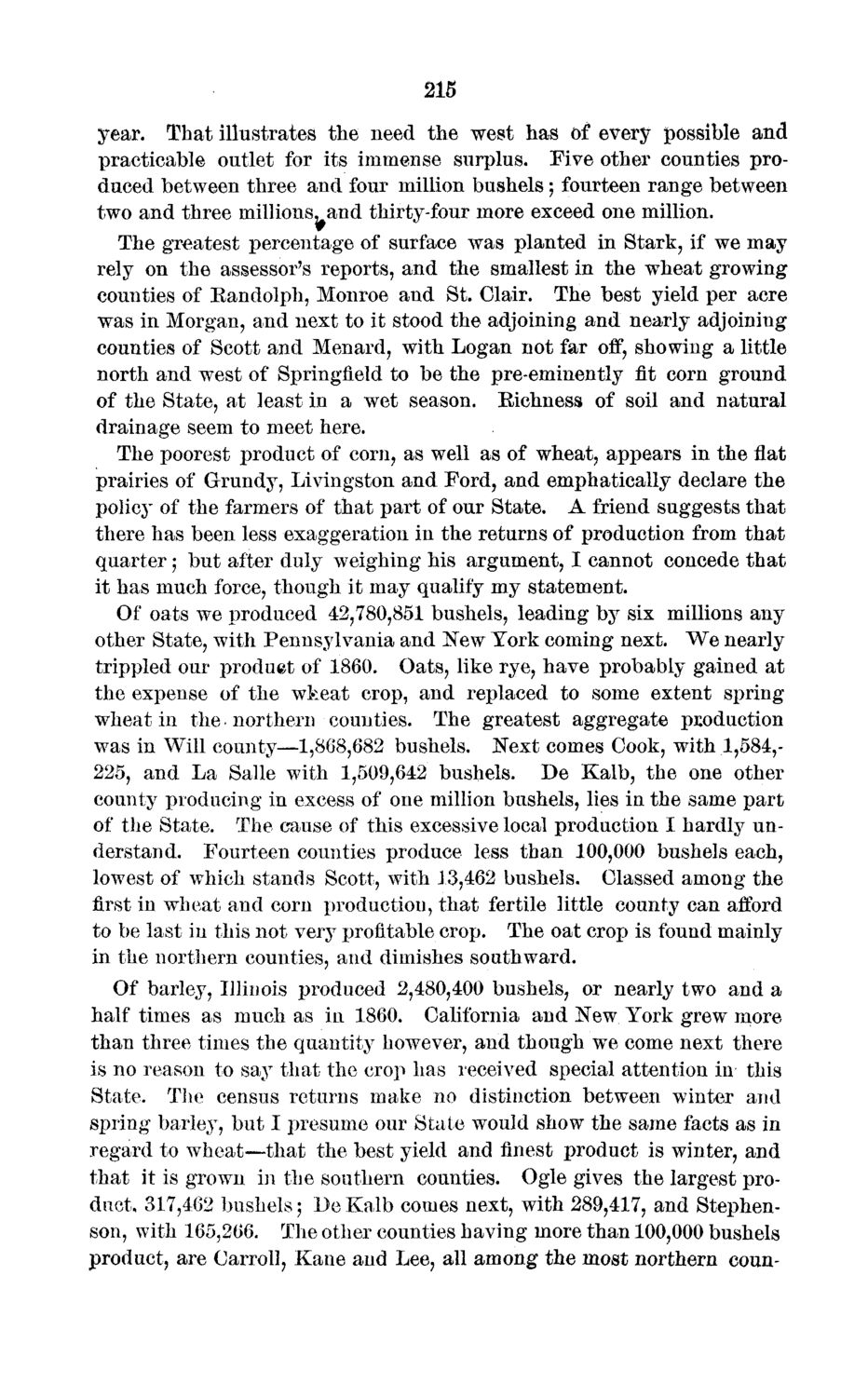| |
| |
Caption: Board of Trustees Minutes - 1873
This is a reduced-resolution page image for fast online browsing.

EXTRACTED TEXT FROM PAGE:
215 year. That illustrates the need the west has of every possible and practicable outlet for its immense surplus. Five other counties produced between three and four million bushels ; fourteen range between two and three millions, and thirty-four more exceed one million. The greatest percentage of surface was planted in Stark, if we may rely on the assessor's reports, and the smallest in the wheat growing counties of Eandolph, Monroe and St. Clair. The best yield per acre was in Morgan, and next to it stood the adjoining and nearly adjoining counties of Scott and Menard, with Logan not far off, showing a little north and west of Springfield to be the pre-eminently fit corn ground of the State, at least in a wet season. Eichness of soil and natural drainage seem to meet here. The poorest product of corn, as well as of wheat, appears in the flat prairies of Grundy, Livingston and Ford, and emphatically declare the policy of the farmers of that part of our State. A friend suggests that there has been less exaggeration in the returns of production from that quarter 5 but after duly weighing his argument, I cannot concede that it has much force, though it may qualify my statement. Of oats we produced 42,780,851 bushels, leading by six millions any other State, with Pennsylvania and New York coming next. We nearly trippled our produet of 1860. Oats, like rye, have probably gained at the expense of the wkeat crop, and replaced to some extent spring wheat in the. northern counties. The greatest aggregate production was in Will county—1,868,682 bushels. Next comes Cook, with 1,584,225, and La Salle with 1,509,642 bushels. De Kalb, the one other county producing in excess of one million bushels, lies in the same part of the State. The cause of this excessive local production I hardly understand. Fourteen counties produce less than 100,000 bushels each, lowest of which stands Scott, with 13,462 bushels. Classed among the first in wheat and corn production, that fertile little county can afford to be last in this not very profitable crop. The oat crop is found mainly in the northern counties, and dimishes southward. Of barley, Illinois produced 2,480,400 bushels, or nearly two and a half times as much as in 1860. California and New York grew more than three times the quantity however, and though wre come next there is no reason to say that the crop has received special attention in this State. The census returns make no distinction between winter and spring barley, but I presume our State would show the same facts as in regard to wheat—that the best yield and finest product is winter, and that it is grown in the southern counties. Ogle gives the largest product, 317,462 bushels 5 DeKalb comes next, with 289,417, and Stephenson, with 165,266. The other counties having more than 100,000 bushels product, are Carroll, Kane and Lee, all among the most northern coun-
| |